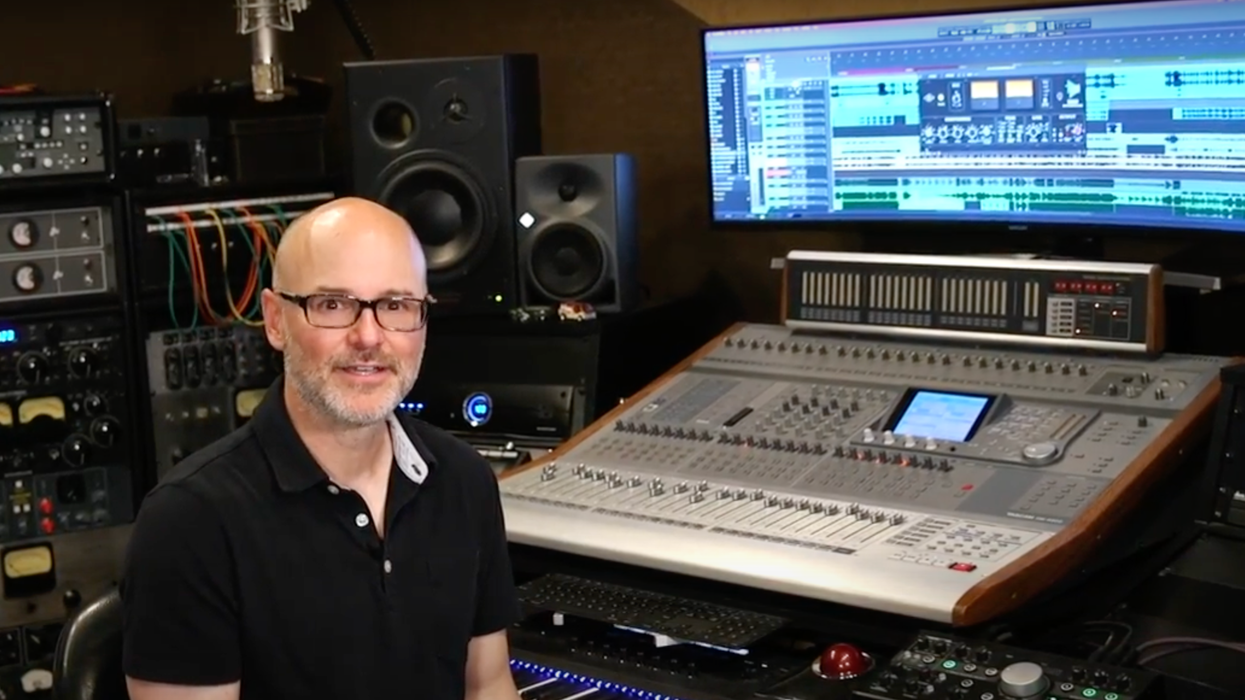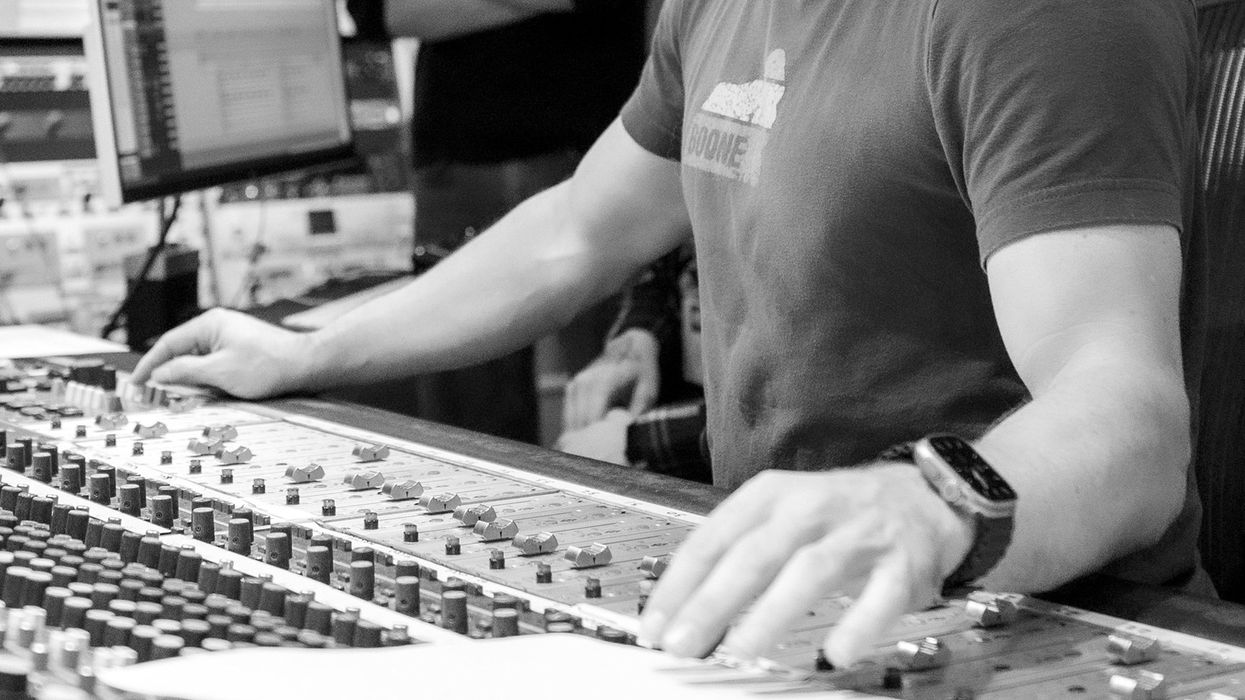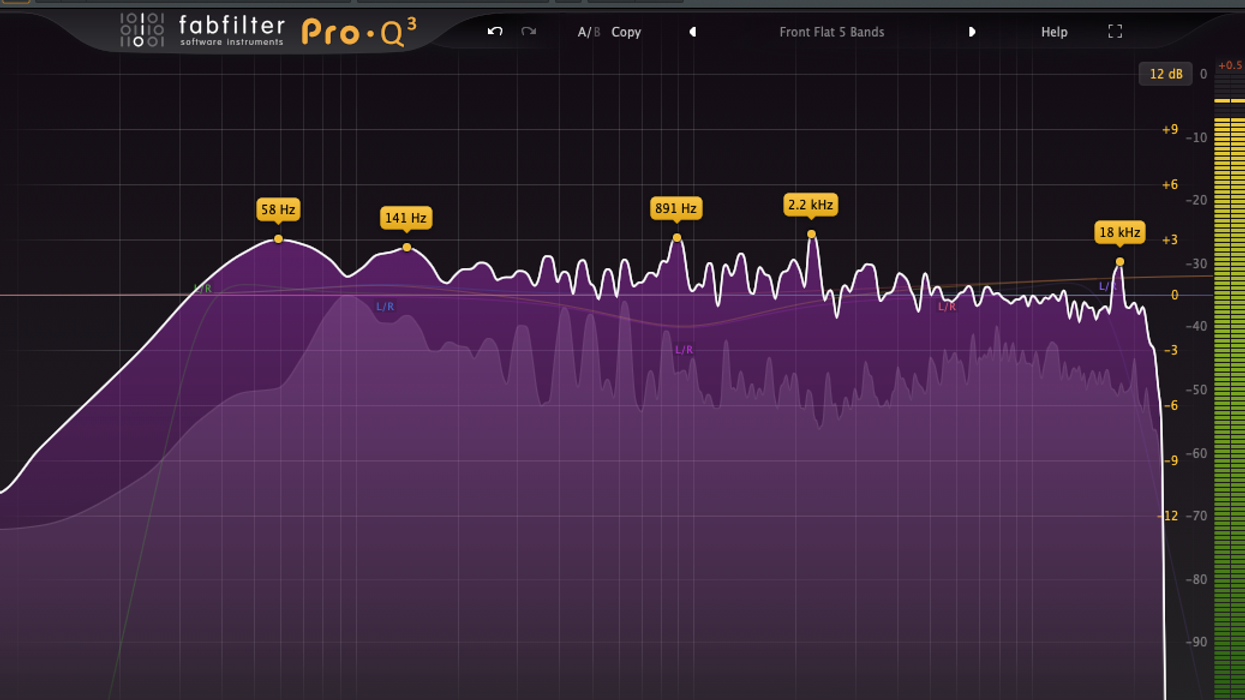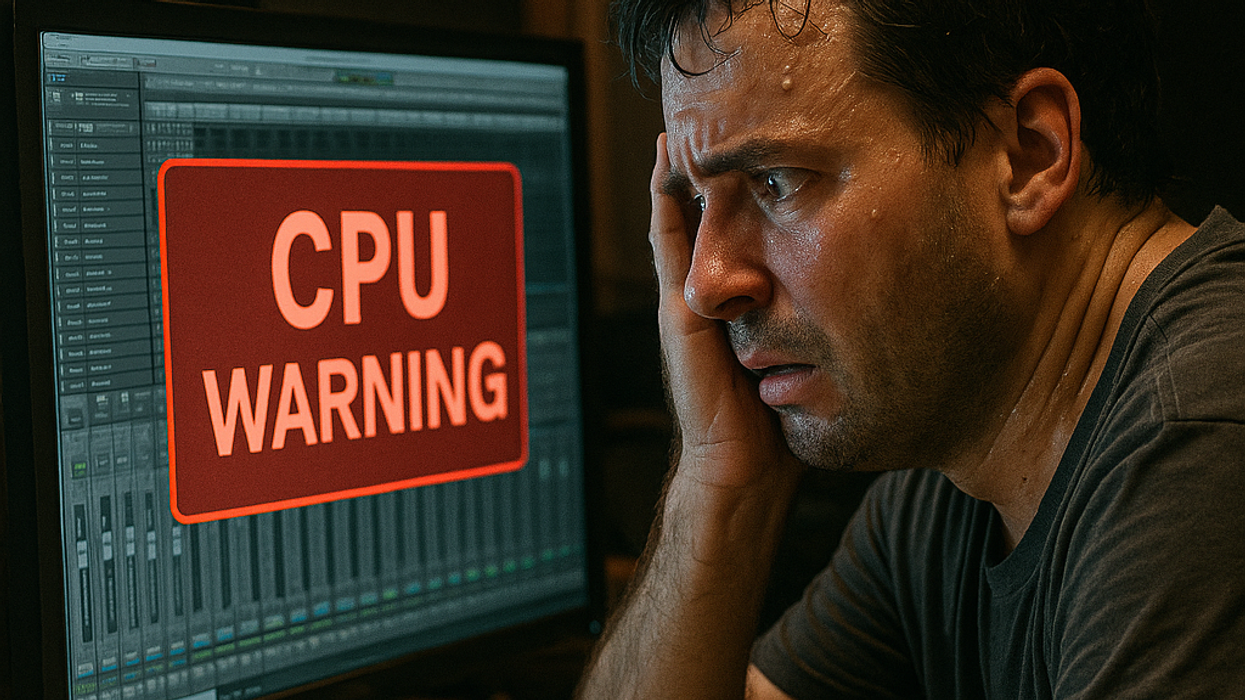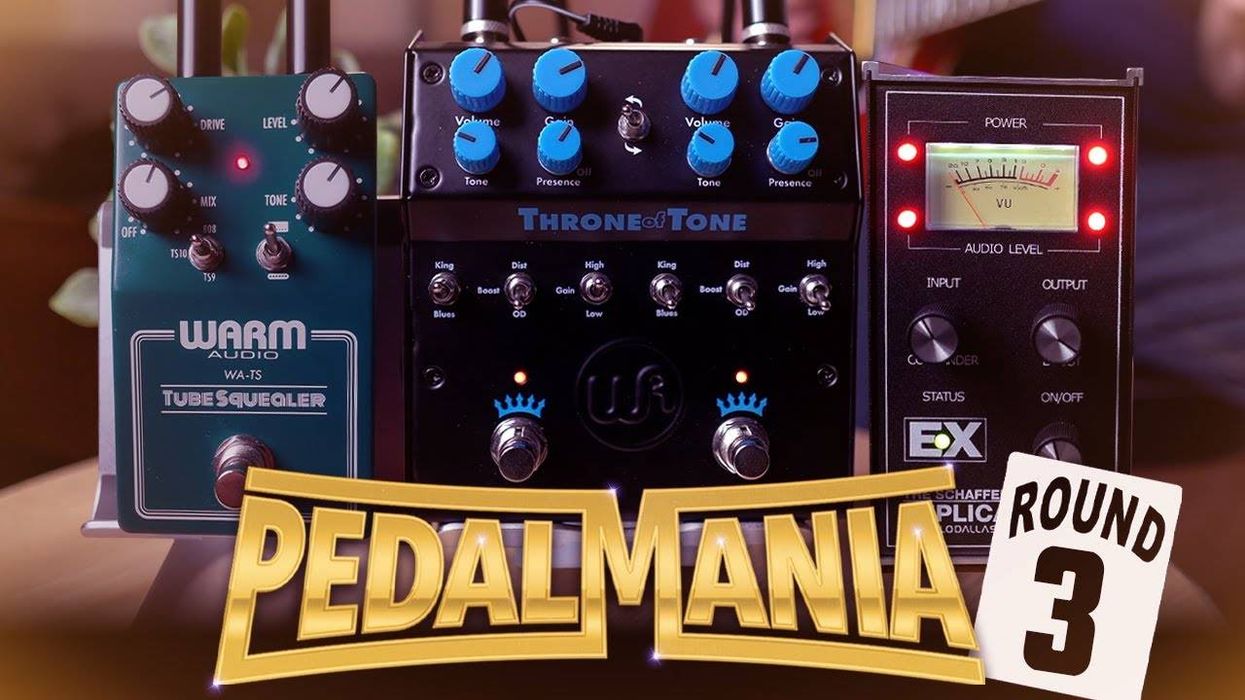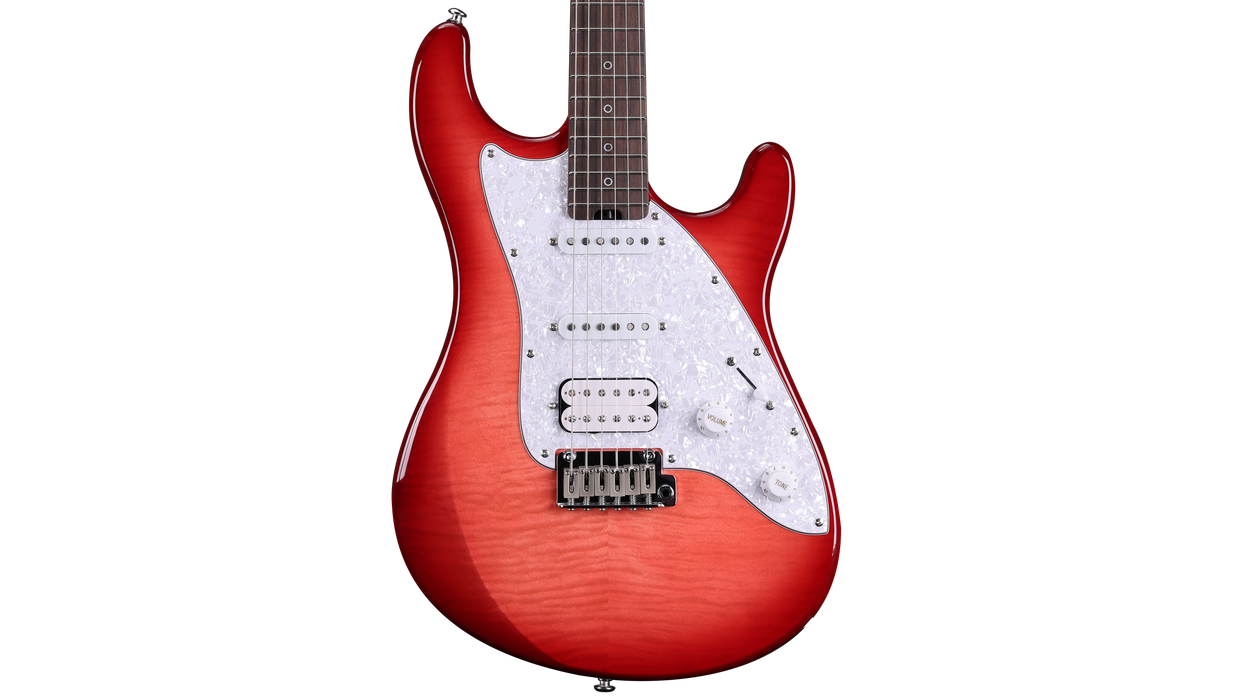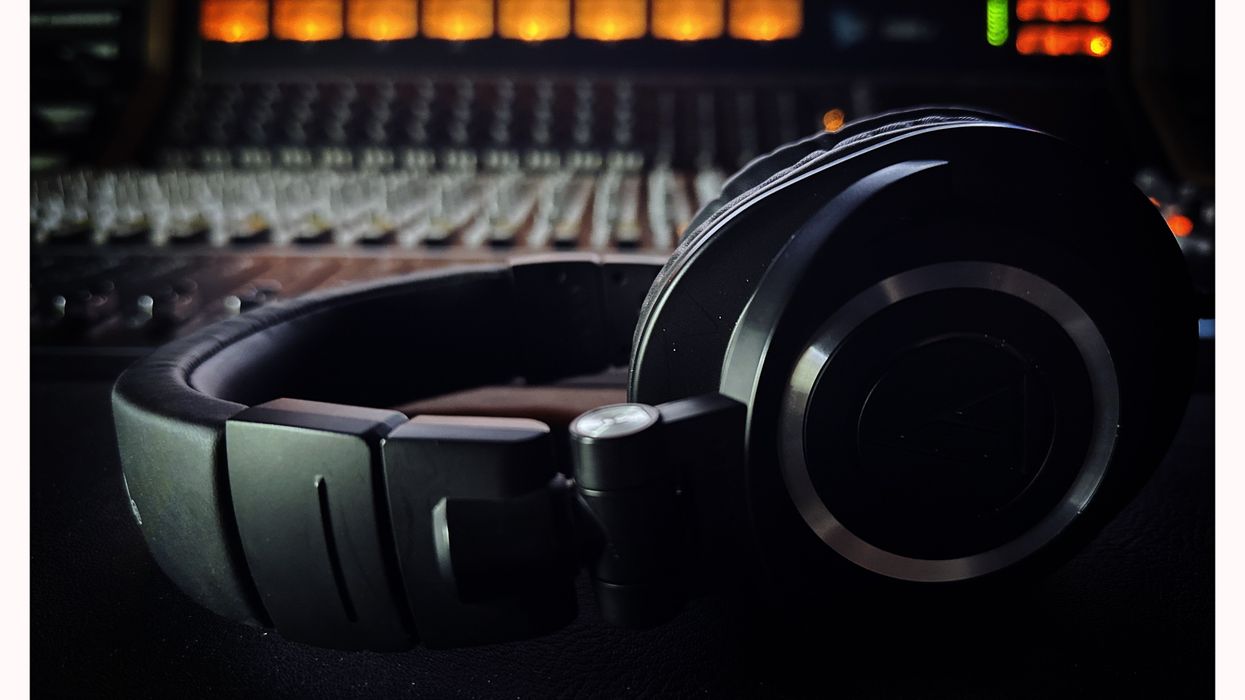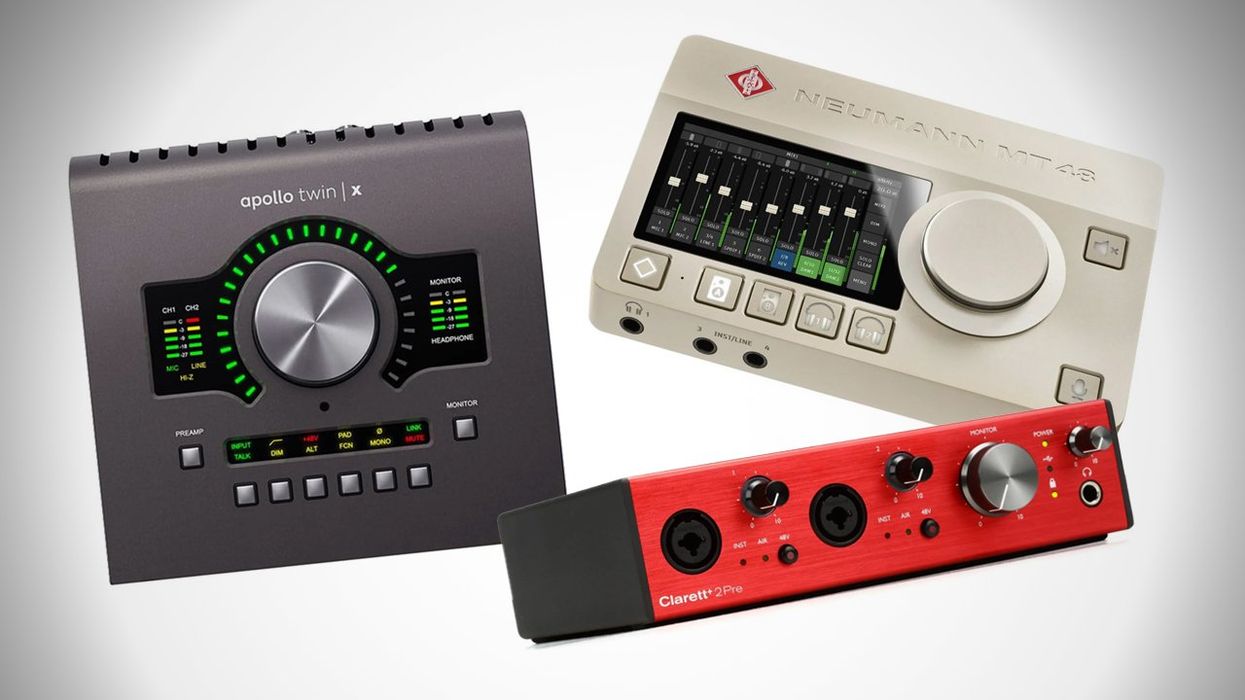Hi, and welcome to another Dojo. This time, I’m going to give you ways to cut the clutter from your sessions and help make your recording process more efficient—in short, more kaizen. This compound Japanese word is usually translated as “good change” but has morphed over the years to mean something closer to “continual improvement.” The concept is applied in multiple industries from auto manufacturing to healthcare, and it can certainly be effectively applied on an individual level.
The idea is that multiple small improvements over time will produce big results. Legendary British cycling coach Dave Brailsford called this “the aggregation of marginal gains.” His strategy was simple: Focus on getting one percent better in every area related to riding a bike. Within 10 years, the British cycling team went on 178 World Championship races and won five Tour de France victories and over 60 Olympic gold medals. Kaizen, indeed! I’m still amazed when I get sessions from other engineers who have no color-coded recording session tracks, haphazard organization within the session itself, and haven’t saved multiple versions. These are three problems that are easily solved with a bit of kaizen. Tighten up your belts, the Dojo is now open.
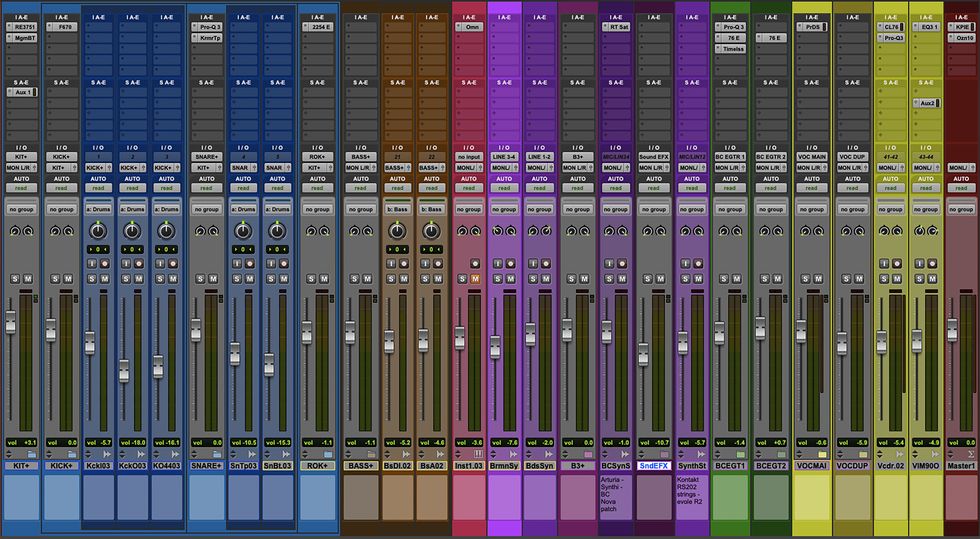
Color differentiation reduces your cognitive load and allows for faster, more efficient recording, editing, mixing, and overall session management.
Diversify Your Color Palette
Color-coding recording session tracks is a powerful tool for visual organization. It’s an essential, non-technical practice that can significantly enhance workflow efficiency and track management. In a typical modern recording session, there can be between 30 and 100 tracks, each representing different instruments, vocals, effects, and other elements. Without a clear organizational strategy, navigating through these tracks can become overwhelming and time-consuming.
By assigning specific colors to different types of tracks, producers and engineers can quickly identify and locate the tracks they need to work on, so establish a consistent color scheme for types of instruments.
Here’s mine:
• Drums are always slate blue.
• Guitars are various shades of green because they’re made from trees (of course, almost everything else is, too, but both guitar and green share the same first letter).
• Bass instruments are always brown (because they’re powerful and can make you brown your trousers).
• Synths and keys are various hues of purple (I think of Prince and “Purple Rain”).
• Vocals are always yellow because when you get lost in the stifling dark caverns of your mix and can’t find your way out, focus on the vocals—they will lead you toward the light.
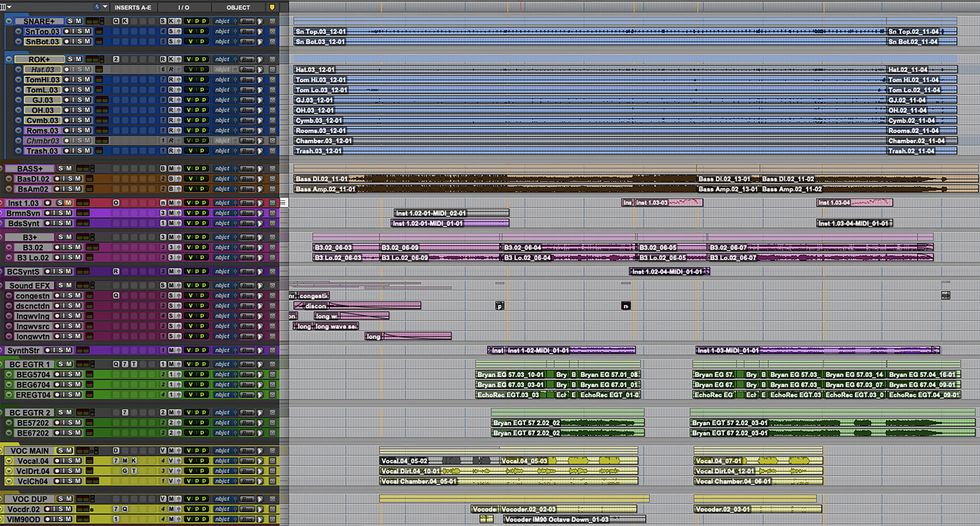
An example of our columnist’s strict session color coding in his DAW.
Regardless of your choices, color differentiation reduces your cognitive load and allows for faster, more efficient recording, editing, mixing, and overall session management. Moreover, color coding helps in identifying groups of tracks that need to be processed together, such as a drum bus or background vocals, thus making it easier to apply group processing and adjustments.
Your layout of a recording session is another critical factor for maintaining organized and productive workflows. A well-structured session layout ensures that all elements of the recording are easily accessible and logically arranged. My tracks have a consistent order: drums at the top, followed by bass, guitars, keyboards, vocals, and effects. There’s no right way to do this, but whatever you do, be consistent.
“I have an existential map. It has 'You are here' written all over it.” – Steven Wright
Consistency helps individual producers and engineers to work more efficiently, but also facilitates collaboration with others. When multiple people are involved in a project, establish a standardized layout that will allow everyone to quickly understand the session structure, find specific tracks, and contribute without confusion. Also, a clear layout helps minimize mistakes during recording, editing, and mixing, like possibly overlooking important tracks or processing the wrong ones.
Your layout of a recording session is another critical factor for maintaining organized and productive workflows. A well-structured session layout ensures that all elements of the recording are easily accessible and logically arranged. My tracks have a consistent order: drums at the top, followed by bass, guitars, keyboards, vocals, and effects. There’s no right way to do this, but whatever you do, be consistent.
Consistency helps individual producers and engineers to work more efficiently, but also facilitates collaboration with others. When multiple people are involved in a project, establish a standardized layout that will allow everyone to quickly understand the session structure, find specific tracks, and contribute without confusion. Also, a clear layout helps minimize mistakes during recording, editing, and mixing, like possibly overlooking important tracks or processing the wrong ones.
“Waste Not, Want Not”
One of the most important things to always remember is to immediately save a new version the very first time you open a project or session. That way, if something happens, and it will eventually (I’ve even had session data get corrupted on that specific sector of the hard drive), you’ve left the original session alone. Every time you work on the song, or project, save a new version. This practice safeguards the process and ensures project security.
This is also important during the creative phase when trying out different ideas and arrangements. If a new idea doesn't work out, it's easy to revert to a previous version without losing valuable progress. Furthermore, saving versions at critical milestones—such as after recording, editing, and mixing—provides fallback options in case of technical issues or unexpected problems. And lastly, saving versions creates a chronological historical record of the session's development, which is invaluable for reviewing the evolution of the track, project, or entire record!
